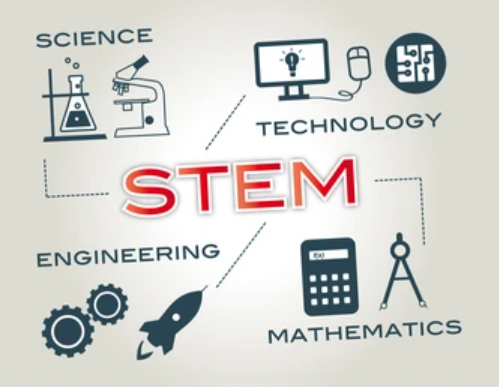
When it comes to getting a research project off the ground in the hard sciences, a strong prospectus isn’t just a formality, it’s your project’s foundation. It’s what shapes how your study unfolds, what kind of impact it might have, and frankly, whether it gets taken seriously by your advisor, your department, or potential funders. Yet, many students treat topic development as a box to check, instead of the careful, strategic process it should be.
In the hard sciences, like physics, chemistry, biology, and engineering, developing your topic is especially critical. These fields are built around precision, structure, and clear methods. If your topic is vague, too broad, or out of sync with current research, it will be hard for your dissertation coach or advisors to move it forward. Your topic has to walk a fine line: it needs to be specific enough to test, but not so narrow that it becomes trivial. That’s a tough balance to strike.
A well-developed topic helps you avoid wasting time. Researchers, without seeking dissertation help, spend months, even years, preparing for experiments, collecting data, and analyzing qualitative or quantitative results. If the topic wasn’t clearly defined from the beginning, chances are, the study might fall apart halfway through. According to Boote and Beile (2005), one of the biggest issues in early-stage qualitative, quantitative, or mixed-method research is a poorly conceptualized topic that doesn’t sit well within the existing body of knowledge. In other words, if you don’t know what’s already been done or how your idea fits in, your work might end up repeating past studies or reaching dead ends.
Good topic development also sets the tone for your entire research journey. It forces you to ask critical questions early: What’s the big question I’m trying to answer? Is this doable with the resources I have? What will I need in terms of statistical or qualitative data or equipment? These are not questions you want to answer halfway through your thesis or experiment. Getting clarity early saves a lot of headaches later.
Here’s the thing: no one really teaches you how to develop a good topic. It’s assumed that you’ll figure it out as you go, often by trial and error. But topic development is a real skill. It requires curiosity, awareness of what’s happening in the field, and a solid understanding of the research process. Hart (1998) emphasized that a good research proposal starts with intellectual preparation, being aware of the “landscape” of existing research, and spotting the gaps that are worth filling.
In the hard sciences, where the margin for error is small, the stakes are even higher. A topic isn’t just a few lines on a page. It’s the launchpad for something that could influence policy, improve lives, or push the boundaries of what we know. So yeah, it matters. A lot.
I. Understanding the Research Ecosystem in Hard Sciences

So, you’ve got a rough idea for a research topic, great start. But before you even think about writing up a prospectus, you’ve got to zoom out and look at the bigger picture: the research ecosystem you’re stepping into. This is especially important in the hard sciences, where your work doesn’t happen in a vacuum. It’s shaped by everything around it, funding cycles, institutional priorities, equipment access, current breakthroughs, and even the kind of research questions that are considered “important” in your field right now.
The Structure Shapes the Science
In fields like physics, chemistry, and biology, research is deeply structured. The scientific qualitative, quantitative, or mixed method dominates the landscape; you’re expected to form a hypothesis, design a testable experiment, and gather measurable, repeatable data. There’s not a lot of room for loosely defined, speculative topics. Your research needs to have a clear question, a solid method, and often, a connection to existing work that’s already passed peer review.
This means the way your field is built, the norms, the expectations, and the technologies in play actually influence what kinds of topics are even possible. For instance, if you’re in molecular biology and you want to study CRISPR gene editing, your lab needs access to specific tools, materials, and protocols. Without that, the topic might be interesting, but it’s not realistic.
As Latour and Woolgar (1986) pointed out in their groundbreaking ethnography of a biology lab, scientific knowledge doesn’t just “happen” in isolation. It emerges through negotiation with tools, statistical or qualitative data, funding, institutional goals, and other researchers. Your topic is part of that web, so understanding the ecosystem isn’t optional; it’s essential.
The Influence of Trends and Technology
Scientific research doesn’t stand still. Every few years (or months!), new tools or discoveries shake things up. Think about how artificial intelligence (AI) is influencing everything from protein folding to climate modeling. If you’re not aware of these shifts, your prospectus might be dead on arrival, not because it’s bad, but because it’s outdated.
On the flip side, jumping on a trend without fully understanding it is risky, too. It’s easy to say, “I want to study quantum computing,” but unless you know where the field currently is, what’s been solved, what’s still messy, and what kind of equipment is available, without dissertation assistance, your topic might be too ambitious or just not viable.
This is where the “ecosystem” metaphor really holds up: ecosystems are complex, interconnected, and always changing. You can’t just drop a new organism (or in this case, a research topic) in and expect it to thrive. You have to understand how it fits into the bigger system.
The Role of Institutions and Labs
One more big piece of the puzzle: your lab and your institution. Different schools and research groups have different strengths. Some are known for computational modeling, others for wet lab experiments, and others for interdisciplinary work. Knowing what your institution is already good at and what it prioritizes can give your prospectus a better shot at support, mentorship, and funding.
Even the availability of equipment matters. Want to run mass spectrometry? Hope someone in your department has access to one because they cost hundreds of thousands of dollars. Developing a topic that works within your local context (without being limited by it) is part of being a strategic researcher.
Understanding the quantitative research ecosystem helps you avoid pitching a project that sounds good on paper but falls flat in practice. It grounds your ambition in reality and gives your work a real shot at moving forward. Once you’ve got a good sense of where your topic might live in the broader field, the next step is making sure it’s actually viable, novel, doable, focused, and methodologically sound. That’s what we’ll tackle in the next section.
II) Criteria of a Viable STEM Prospectus Topic

Coming up with a research idea can feel exciting at first. You’re inspired, the concept sounds bold, and you’re ready to take it to your advisor. But here’s the thing: not every interesting idea makes a strong prospectus, especially in the hard sciences. Before you dive in, you need to pressure-test your topic against a few key criteria. These aren’t just academic hoops to jump through, they’re what determines whether your research can actually work in the real world.
1) Novelty (But Not Just for Novelty’s Sake)
A common mistake? Chasing a brand-new idea just because it hasn’t been done yet. Novelty is important, after all, science progresses by building on new findings, but the value of your topic comes from what it adds to the field, not just what it avoids repeating. You want to ask: What research gap am I filling? What unresolved research question am I helping to answer? What limitations from past studies am I addressing? As Phillips and Pugh (2010) note, originality isn’t just about discovering something no one’s ever heard of, it’s about contributing something meaningful to ongoing conversations in your field.
2) Feasibility: Can You Actually Pull This Off?
This is where a lot of promising ideas get stuck. Just because a project sounds cool doesn’t mean it’s doable, especially within the limits of time, resources, and lab access. A viable topic has to match what’s available to you right now: equipment, software, quantitative datasets, chemicals, and even mentorship. Feasibility also means thinking realistically about how long it will take to gather data and whether you can handle your quantitative research method. Do you know how to use the equipment you’re proposing? Can you troubleshoot it if something goes wrong? Are the safety protocols manageable? If your research design depends on factors that are out of your control, that’s a red flag.
3) Specificity: Zoom in Before You Scale Up
Hard science topics need to be laser-focused. Broad ideas like “exploring climate change” or “studying cancer cells” won’t cut it; you need to narrow your focus to something measurable and testable. This is where many students hit a wall: they’re interested in a big problem but haven’t figured out how to break it down into a research question they can actually investigate. For example, instead of studying “solar energy,” you might look at “the effect of titanium dioxide nanoparticle size on the efficiency of dye-sensitized solar cells.” Specificity lets you define your statistical variables, set your boundaries, and design experiments that lead to clear conclusions. Without it, you’ll struggle to write a research hypothesis, much less test one.
4) Alignment with Methodological Expectations
Different disciplines within the hard sciences have different norms for how research should be done. If you’re in a chemistry lab, people expect reproducible, empirical data, not vague models or hand-waving arguments. If you’re in computer science, you may need to balance theoretical rigor with experimental validation. A viable prospectus topic fits comfortably within the methodological expectations of your field. This is also where you consider your variables, controls, and sample size. Are your methods valid for the kind of data you’ll collect? Are they ethical and safe? Do they match your research question? According to Grix (2010), one of the biggest hurdles in early-stage research is failing to connect the topic to the right methodological “toolkit.” Your tools and your topic have to work together, otherwise, your project won’t hold water when it’s time to defend it.
5) Impact and Relevance
Finally, think about the “so what?” factor. Your quantitative research doesn’t have to solve all the world’s problems, but it should matter to someone, whether that’s a research community, a public health organization, a tech company, or the scientific public. Who would care about your findings? Who might use them? This isn’t about marketing your work. It’s about understanding its role in the broader system of scientific inquiry. Relevance is what helps your work feel grounded, purposeful, and worthy of support, especially if you’re applying for funding or trying to get published.
Once your topic checks all these boxes, novelty, feasibility, specificity, methodology, and relevance, you’re in a solid place to move forward. But how do you find these kinds of topics in the first place? That’s where a smart, strategic literature review comes in. The next section will walk you through how to mine existing research to discover research gaps, patterns, and opportunities worth exploring.
III. Using Literature Reviews to Pinpoint Gaps and Niches

By now, you know your research topic needs to be viable, focused, feasible, and meaningful. But where do those strong ideas actually come from? How do you move from “I’m interested in renewable energy” to “Here’s a specific, researchable problem that hasn’t been fully solved”? The answer, nine times out of ten, is the literature review.
Now, don’t let the phrase scare you off. A literature review isn’t just some academic ritual, it’s your detective work. It’s how you figure out what’s already been done, what still needs attention, and where your work could make a difference. In the hard sciences, this process can be surprisingly powerful if you approach it right.
Think of the Literature Review as a Map
A good literature review helps you see the landscape of your field. Imagine you’re looking at a satellite image: the review shows you the mountains (well-studied areas), the rivers (emerging topics), and the valleys (underexplored or ignored). Your job is to find a niche where your quantitative research can grow without duplicating what’s already out there. According to Machi and McEvoy (2016), reviewing the literature is really about building a conceptual framework. You aren’t just collecting articles, you’re analyzing patterns, evaluating strengths and weaknesses, and spotting tensions between findings. This is how you identify a gap worth investigating.
Mining for Gaps, Not Just Summarizing Studies
One big mistake students make is treating the literature review like a book report. They summarize what each paper says without asking the deeper questions: What’s missing here? What are people disagreeing about? What techniques haven’t been tried yet? The best literature reviews in STEM don’t just say “Smith (2019) studied X.” They say, “Smith (2019) studied X using method Y, but their sample was small and limited to one condition, which leaves an opening for Z.” That’s how you turn the review into a launchpad for your topic. You’re not just learning, you’re critiquing. It also helps to follow citation trails. If you find a paper that’s been cited hundreds of times, look at who’s citing it and what they’re building on or challenging. Citation networks can expose you to ongoing debates and help you figure out where your idea might plug in.
Let Technology Help (But Don’t Over-Rely)
There are fantastic tools out there now, like Google Scholar, PubMed, and Web of Science, that make the search process easier. You can even use tools like Connected Papers or Research Rabbit to visualize how articles link to one another; if not sure, approach a literature review consulting company for guidance. These are great for surfacing clusters of related work and identifying outliers that might hint at a new direction. But remember, no algorithm can replace your judgment. You still have to read, think critically, and ask: Is this area oversaturated? Is it still relevant? Is there room for a new angle?
Don’t Just Look for the Obvious
Sometimes, gaps in the literature aren’t just about “what hasn’t been studied yet.” They can also be about how something has been studied. Maybe a process hasn’t been replicated with a new technique. Maybe past experiments had limitations in scope, sample size, or instrumentation. Maybe earlier researchers raised research questions they never had time to answer. This is where you find your niche. As Cooper (2016) points out, a literature review should show how your work builds logically from, but also moves beyond, what’s already known. That’s how you position your research as both relevant and necessary.
Once you’ve done the work of reading deeply and thinking critically, a clearer picture usually starts to emerge: not just of what your topic could be, but of what it should be. Now the next challenge is taking that raw insight and turning it into a focused, actionable research topic that doesn’t just sound good, but it works in practice. In the next section, we’ll dive into exactly how to take a big scientific question and shape it into a specific, high-quality prospectus topic.
IV. Integrating Data Availability and Methodological Fit

Once you’ve landed on a focused research topic, one of the most important (and often overlooked) next steps is making sure your topic actually works in practice. That’s where two crucial pieces come in: data availability and methodological fit. These aren’t just boring technical details to sort out later, they can make or break your project. You might have the most original idea in your cohort, but if there’s no realistic way to collect data or if your chosen method doesn’t match your question, things will fall apart fast.
Data: The Backbone of Any STEM Project
In the hard sciences, data is everything. Your entire research design, and eventually your findings, rest on having the right kind of data in the right quantity, collected in the right way. So, before you get too far, ask yourself: Does the data I need already exist somewhere? If not, can I realistically collect it within my timeline and budget? Is the data reliable, clean, and relevant to my exact question?
Let’s say you’re working in environmental science and want to study the impact of road salt on freshwater ecosystems. That sounds promising, but do you have access to lakes or river sites? Can you collect regular samples over several weeks or months? Or can you find a public dataset that tracks those environmental variables? Researchers like Creswell and Creswell (2018) emphasize that good research planning includes identifying data sources before writing the full proposal. Without this, you risk creating a project that looks good on paper but can’t be executed in real life.
Method Matters, A Lot
Just as important as having data is knowing how to work with it. Your chosen method has to match your research question. If your question is about measuring differences between two conditions, you might need statistical tests like ANOVA. If you’re trying to explore chemical properties, you may need to rely on spectroscopy or chromatography.
Here’s where many students run into trouble: they pick a quantitative method they’re familiar with, even if it doesn’t really match their topic. Or they pick an advanced method they don’t fully understand, which leads to issues when it’s time to apply it. Your methods need to: Align with the type of data you’re collecting; Be appropriate for your field’s standards (e.g., replication, controls, statistical rigor); Be feasible within your skill set, or be something you’re ready to learn fast.
For example, imagine you’re doing a study on protein expression using Western blotting. It’s a common technique in biology, but do you know how to run one? Do you have access to the antibodies and reagents you need? Do you know how to quantify the results properly? These are the kinds of questions you want to answer before you commit to that method in your prospectus.
Tools, Tech, and Training
Some methods also require specific tools or equipment, like high-performance liquid chromatography (HPLC), particle accelerators, or software for simulations. Don’t assume these are readily available just because your topic sounds reasonable. If you’re doing computational research, you’ll also want to check whether you have the processing power, licenses, or storage capacity to run your models. These logistical details may seem minor, but they matter a lot. It’s also worth noting that some methods may require certifications, ethical clearance, or specialized training (especially in biology, chemistry, or medical studies). It’s best to sort all of that out early so there are no surprises later.
When you’ve found a topic with accessible data and a method that fits like a glove, you’re not just closer to finishing your prospectus, you’re laying the groundwork for a smooth, successful research process. The earlier you sort out these practical details, the fewer roadblocks you’ll hit when it’s time to actually do the work.
Conclusion
Crafting a strong STEM prospectus is more than an academic requirement, it’s an introduction to the mindset of real scientific work. It teaches students how to ask the right questions, align their interests with research gaps, and plan methodologically sound projects. For many, this early stage of research can feel overwhelming, but it’s also where scientific thinking truly begins to take shape.
That’s exactly where dissertation help, expert guidance, and early mentoring can make a difference. Whether you’re struggling to refine your topic, match it with the right method, or simply get unstuck, our dissertation help service is designed to guide you through it all. Our team offers personalized dissertation assistance, including access to a dedicated dissertation coach, to help you translate big ideas into viable, fundable, and impactful research proposals.
If you’re in need of structured feedback, topic development support, or full-scale dissertation consulting, don’t wait until you’re buried in deadlines. Our tailored dissertation services are built to support hard science students who want clear, confident direction at every stage, from your first draft to final approval. Get help with dissertation writing and strategy that puts your work and your confidence on solid ground.
References
Boote, D. N., & Beile, P. (2005). Scholars before researchers: On the centrality of the dissertation literature review in research preparation. Educational Researcher, 34(6), 3-15. https://doi.org/10.3102/0013189X034006003
Creswell, J. W., & Creswell, J. D. (2018). Research Design: Qualitative, Quantitative, and Mixed Methods Approaches (5th ed.). Sage Publications
Grix, J. (2010). The Foundations of Research. Palgrave Macmillan.
Hart, C. (1998). Doing a Literature Review: Releasing the Social Science Research Imagination. Sage Publications.
Latour, B., & Woolgar, S. (1986). Laboratory Life: The Construction of Scientific Facts. Princeton University Press.
Phillips, E. M., & Pugh, D. S. (2010). How to Get a PhD: A Handbook for Students and Their Supervisors. McGraw-Hill Education.